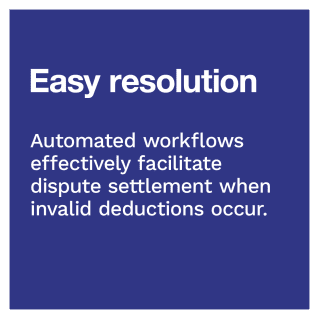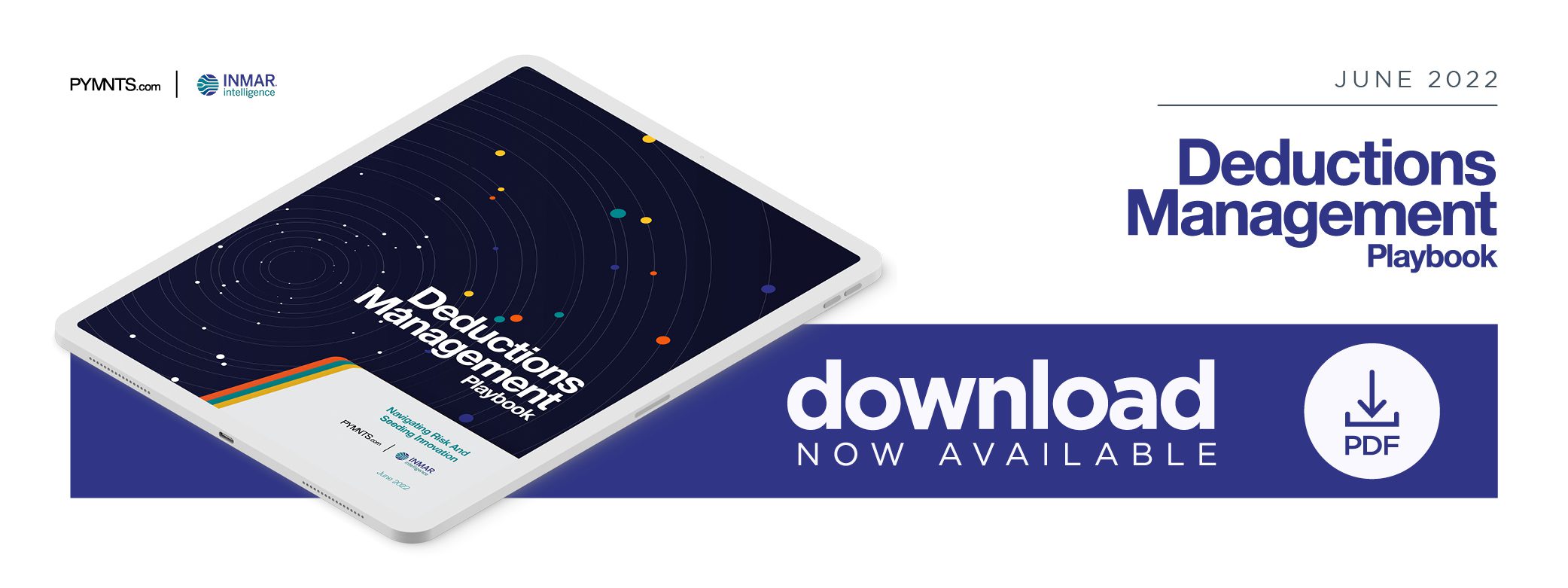CPG Supplier Profit Margins Get Much-Needed Boost After Automating Deductions

Deductions occur when buyers fail to pay manufacturers the full price for their products as listed on their invoices, and they may occur for several reasons. Buyers could receive damaged or defective products, for example, or they may have received more inventory than they purchased.  Manufacturers have established deductions policies to deal with these issues, but as much as 25% of buyers’ deductions either do not satisfy those policy requirements or are deemed preventable. This can significantly affect manufacturers’ margins if costs are not recouped.
Manufacturers have established deductions policies to deal with these issues, but as much as 25% of buyers’ deductions either do not satisfy those policy requirements or are deemed preventable. This can significantly affect manufacturers’ margins if costs are not recouped.
Yet, deductions management remains a trial-and-error process for many companies, especially those in the consumer packaged goods (CPG) space. Higher-volume sales often lead to a rise in deductions, and CPG firms’ chief financial officers (CFOs) may have little time to research, test and implement a deductions management strategy as they court enterprise buyers. Smaller manufacturers, meanwhile, may have fewer resources to devote to developing a custom approach to limiting deductions risk.
This is only one of the key trends examined in “The Deductions Management Playbook: Navigating Risk And Seeding Innovation,” a PYMNTS and Inmar collaboration.  Deductions management automation can help CPG firms mitigate risks, and technical innovation has guided their decisions. The report features an interview with Jordan Bodine, senior manager of sales operations and planning at CPG firm Himalaya, about its deductions management strategies, highlighting challenges and the company’s tangible results.
Deductions management automation can help CPG firms mitigate risks, and technical innovation has guided their decisions. The report features an interview with Jordan Bodine, senior manager of sales operations and planning at CPG firm Himalaya, about its deductions management strategies, highlighting challenges and the company’s tangible results.
Some insights include:
Automating repetitive deductions management tasks has freed up Himalaya’s accounts receivable (AR) team to focus on growing the business while also leading to better and more accurate reporting. Reporting is a big aspect of tracking and reconciling every month, and automating that allows the team to instead focus their energies on more important areas of the business that drive revenue. Also, automation takes human error out of the equation and makes everything just perfectly accurate, Bodine said.
 Using technology to sift through invalid deductions claims has not only saved accounting time, but has also helped streamline sales and customer relations processes. Sifting out invalid deductions claims is a key challenge that organizations face, and technology has helped streamline the process, according to Bodine. Using email to verify and manage deductions has become a thing of the past. Now, they use a portal as a single source of truth for all deduction and dispute information.
Using technology to sift through invalid deductions claims has not only saved accounting time, but has also helped streamline sales and customer relations processes. Sifting out invalid deductions claims is a key challenge that organizations face, and technology has helped streamline the process, according to Bodine. Using email to verify and manage deductions has become a thing of the past. Now, they use a portal as a single source of truth for all deduction and dispute information.
Automating deductions management helps protect profit margins, especially when it is possible to lose money due to human error. It keeps CPG firms from losing opportunities to regain money that they should have already received through deduction. For Himalaya, automating deductions management meant the difference between disputing a deduction in a timely fashion or having to write off a loss because a retailer’s deadline was missed, for instance.
To learn more about how CPG firms are automating deductions management, download the report.
For all PYMNTS B2B coverage, subscribe to the daily B2B Newsletter.
